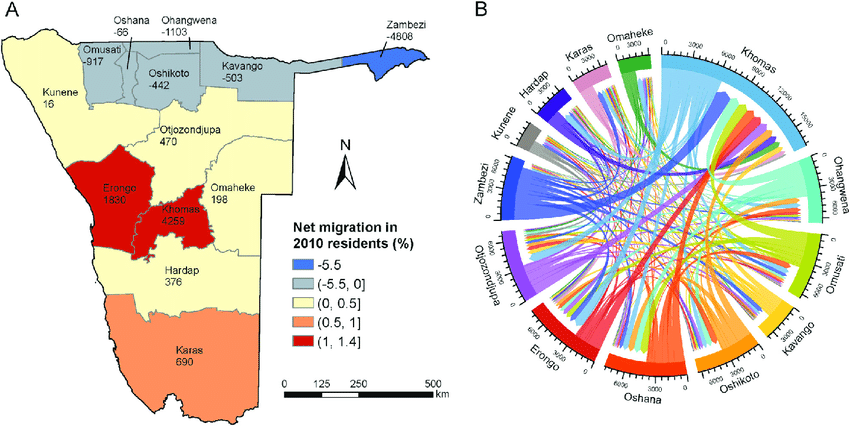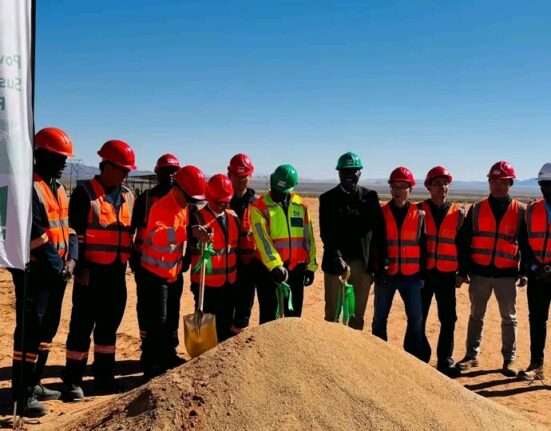Namibia’s census process has long been a crucial tool for understanding the country’s demographic shifts, economic trends, and social dynamics. But unlike many other nations, Namibia faces unique challenges due to its vast, sparsely populated desert landscapes, significant rural-urban migration, and fluctuating population movement. As the world increasingly values accuracy and real-time data, Namibia’s innovative approach to conducting its census—particularly its ability to account for a highly mobile population—sets it apart on the global stage. This article takes a closer look at Namibia’s distinctive census approach, its challenges, and the cutting-edge solutions that help ensure that residents, even those on the move, are accurately counted.
The Importance of a National Census
A national census is a vital tool for any government, offering detailed insights into the population’s size, composition, and trends. This data guides decision-making in critical areas like resource allocation, infrastructure development, social services, and policy creation. For Namibia, with its relatively small population of around 2.5 million people, accurate population data is essential to understand how its citizens are distributed across the country, especially considering the ongoing rural-to-urban migration and the presence of transient communities.
Namibia’s census is typically carried out every ten years, in line with global standards. However, unlike other countries where population data may remain relatively static, Namibia’s geographic diversity and shifting social dynamics necessitate a more dynamic approach to capturing its population’s true makeup.
The Challenge of Mobility in Namibia
Namibia’s large size and low population density present particular challenges in gathering accurate census data. Around 80% of the country’s land area is sparsely populated, with many communities living in rural regions where access to modern amenities and technology may be limited. At the same time, more people are migrating from rural areas to urban centers in search of employment, education, and better living conditions, particularly in cities like Windhoek, Swakopmund, and Walvis Bay. This rural-to-urban migration is compounded by high rates of cross-border movement due to the country’s proximity to Angola, South Africa, and Botswana.
Moreover, Namibia is home to several nomadic and semi-nomadic communities, such as the San and Himba peoples, who move across vast distances for seasonal grazing, traditional practices, or in response to changing environmental conditions. These communities present a unique challenge for traditional census methods, which often rely on fixed residences to identify and count people. Capturing the fluid and transient nature of these populations requires innovative approaches to ensure that every Namibian is counted, regardless of their mobility.
Namibia’s Mobile Census Approach: Key Features
To address these challenges, Namibia has developed a unique approach to its census that reflects the country’s dynamic population. The primary aim is to reach all residents—whether in settled homes, informal settlements, or on the move. This approach involves the following key elements:
1. Using Satellite Imagery and Geographic Information Systems (GIS)
One of the most groundbreaking elements of Namibia’s census approach is the use of modern technology, including satellite imagery and Geographic Information Systems (GIS). By combining satellite data with traditional survey methods, Namibia can map out areas that are traditionally difficult to access due to their remote or transient nature.
GIS allows census officials to monitor population trends in real time, and satellite imagery helps to track settlements that may not be formally recognized or where communities frequently change locations. This technology enables census teams to identify settlement patterns in informal areas, rural communities, and nomadic regions, helping ensure that no one is left out of the count.
2. Mobile Census Teams and Transient Population Tracking
Namibia has adapted its data collection efforts by sending mobile census teams to remote and rural areas. These teams are equipped with advanced tools and training to reach Namibia’s most mobile populations, such as the Himba, San, and other nomadic groups. They often travel to areas that are not easily accessible by road, ensuring that the census process captures the residents in such remote regions.
In addition, Namibia’s census teams have been trained to understand and interact with transient populations. Special protocols are in place to track those who are temporarily residing in towns, rural regions, or informal settlements, as well as those who may have moved back and forth between areas or across borders during the census period.
3. Decentralized Data Collection and Local Collaboration
To manage its large-scale census, Namibia partners with local communities, municipalities, and regional authorities. Local leaders and traditional authorities play a crucial role in the census process by helping officials access mobile and remote populations. These local stakeholders act as facilitators, helping to engage residents and ensure that the census reaches all areas of the country.
Moreover, decentralized data collection efforts allow census officials to gather data simultaneously in different regions. This approach ensures that urban centers and rural regions alike are adequately covered and that the mobility of residents does not hinder the effectiveness of the count.
4. Digitization and Real-Time Reporting
In recent years, Namibia has moved toward digital data collection methods, allowing census enumerators to input data into mobile devices or tablets, which then transmit information directly to a central database. This eliminates the need for manual data entry and significantly reduces the time between data collection and reporting. Real-time reporting enables census officials to identify gaps or discrepancies in coverage and take corrective measures quickly.
Digitization also allows for the capture of more accurate data on the population, with enumerators able to confirm and verify information using mobile apps. The use of mobile devices has also allowed the census to gather additional data beyond basic population counts, such as information on educational attainment, employment, housing, and health, offering valuable insights for future policy development.
5. Incorporating National and Cross-Border Migration Data
Given Namibia’s proximity to Angola, South Africa, and Botswana, cross-border migration is an important factor influencing population shifts. In response, Namibia’s census efforts also integrate data on cross-border migrants. By collaborating with neighboring countries’ census offices and immigration authorities, Namibia aims to ensure that all individuals who live or work in the country, even on a temporary basis, are included in the count.
Special attention is paid to migrant workers who may spend part of the year working in urban areas and the rest of the year in rural or cross-border communities. Census officials gather information from border posts, transport hubs, and places of temporary work to get an accurate picture of the migrant population in Namibia.
Challenges and Solutions
While Namibia’s innovative census approach has proven successful, it is not without its challenges. Among the most pressing are:
- Logistical Issues: Reaching remote, nomadic communities can be difficult, requiring extensive planning and preparation. Mobile census teams must contend with limited transportation, challenging terrain, and sometimes extreme weather conditions.
- Public Awareness: Ensuring that people are aware of the census and understand its importance is key to success. Public awareness campaigns, through local media, community leaders, and public events, are essential for encouraging participation.
- Security and Safety: In regions affected by drought, environmental stress, or political unrest, the safety of census workers and respondents can be a concern. Government and local authorities must work together to ensure a secure environment for data collection.
Looking Ahead: The Future of Namibia’s Census
As Namibia continues to innovate and evolve its census processes, the country stands as a model for how data collection can adapt to a mobile, diverse, and geographically dispersed population. The combination of modern technology, collaboration with local communities, and specialized techniques for tracking transient populations is setting new standards for census methodology in developing countries.
Namibia’s ability to count residents on the move reflects the country’s commitment to inclusivity and its recognition that every person counts, regardless of where they live or how often they relocate. As the world’s populations continue to shift and urbanize, Namibia’s experience offers valuable lessons for other nations seeking to keep pace with demographic changes and ensure that no one is left out of the count.
In conclusion, Namibia’s innovative approach to census-taking stands as a testament to the nation’s determination to embrace modern technology, overcome logistical hurdles, and ensure that its diverse population is accurately represented. By continually refining its methods and incorporating the lessons learned from each census cycle, Namibia is leading the way in using data for better governance and a more informed future.
Join 'Namibia Today' WhatsApp Channel
Get the breaking news in Namibia — direct to your WhatsApp.
CLICK HERE TO JOIN












